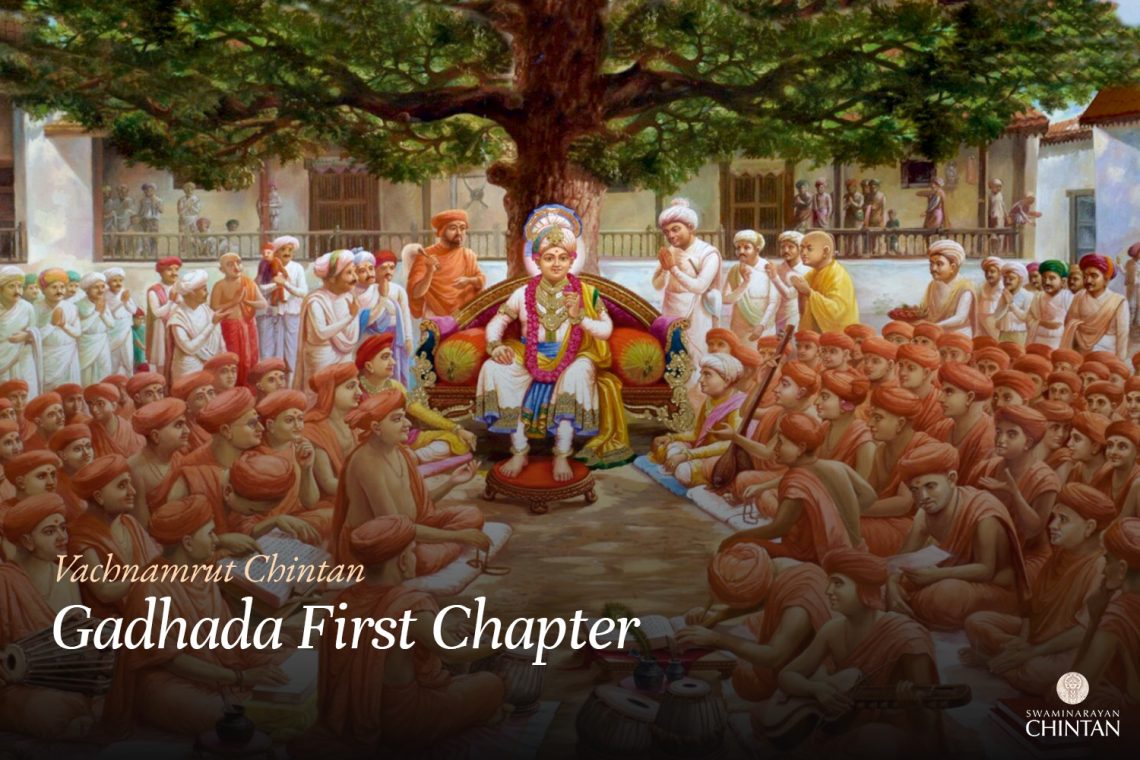Central Insights:
- Is God with a form (Sakar) or formless (Nirakar)?
Key Points:
- Always remember that God has a form.
Explanation
In this Vachanamrut, Gopalanand Swami asks a question regarding whether God is formless or with form. Some Vedantists claim that God has no form and prach such Shruties to support their view, while others, such as Narad, Shuk, Sanakadi, who are great devotees of God, assert the concept of God with a form. So, who is the true representation?
Maharaj answers that God, Purushottam, is always Sakar (with a form) and is divine and luminous. He is the omnipotent, omniscient, omnipresent and is the embodiment of truth, consciousness, and bliss (Sachidanand Brahma), which is the formless aspect. The scriptures also affirm that God can assume a form when interacting with Maya (illusion) and still maintain His formless nature.
Other scholars and gurus who accept that God is sakar (with form) have a beautiful solution for the nirakaar (without form) shrutis. The sakar paksha (sakar-accepting side) believes that the nirakaar shrutis have a visheshabhed (different subject) meaning. In other words, the shrutis that appear to or are said to present God as nirakaar are not actually presenting God as nirakaar, but rather a difference in the subject. This difference in the subject is supported by the granthik shrutis, which are the shrutis that present God with a body and bodily qualities.
The nirakaar paksha (nirakaar-accepting side) does not have a solution for the sakar-presenting shrutis. They say that the shrutis that present God as sakar are minor, while the shrutis that present God as nirakaar are major. This is their argument and solution. But this solution is hollow.
Who makes the distinction between “minor shruti” and “major shruti”? Is it the shruti itself, or the nirakaar mat (nirakara-accepting school of thought) itself? They do not have an answer to this question. The one who makes the distinction between minor and major is the nirakaar matvadi (nirakara-accepting person), not the shruti. They also need to stretch this meaning to support their own view of nirakaar. Even an acharya does not have the authority to make this distinction in the shrutis, and perhaps only the acharya of acharyas, Bhagwan Vyasa, could say it. There are no words in which Vyasa has said this clearly. Therefore, the reasonable argument of the sakar manana (sakar-accepting school of thought) against this is that all the shrutis of the Vedas are equal.
The difference between the sakar paksha and the nirakaar paksha on the nature of God is a matter of perspective, not contradiction. In fact, many shrutis support the sakar paksha by describing God with a body and bodily qualities. The nirakaar paksha does not have the same level of support from the shrutis.
The Maharaj presented his arguments on the basis of both shruti and anubhava (experience). He said that water is nirakaar, but the god of water (Varun) is sakar. The same is true of all gods. From this perspective, sakar is the primary and nirakaar is secondary. This is because the embodied form of Varun is more important than water itself, and the Maharaj is more important than his radiance. The importance of the owner is greater than the importance of the property. Therefore, even if a distinction is to be made between the two, the sakar-presenting shrutis should be considered primary. However, the sakar paksha does not need to make this distinction.
In addition, the shrutis that describe the dissolution and creation of the universe should be considered primary in determining the nature of God. Therefore, the statement स एक्षत— sa ekṣata, “He saw” is associated with the sakar form. These shrutis present God as sakar. Therefore, the Maharaj concluded that the sakar understanding of God is correct. The nirakaar understanding is not as supported by the shrutis as the sakar understanding. Therefore, the Maharaj said that God is always sakar.
Glossary
| Acharya – Spiritual Teacher A learned scholar or religious leader who interprets scriptures. |
| Anubhava – Experience |
| Granthik Shrutis – Scriptures describing God with form |
| Maya – Illusion The material energy that entangles the Jeev in worldly existence and distracts from Bhagwan. |
| Nirakar – Formless The state or form where God or a divine entity is perceived as without form or attributes, often contrasting with the manifest form. |
| Nirakar Mat – Formless Philosophy The school of Vedantic thought that denies God’s physical form. |
| Nirakar Paksha – Supporters of Formlessness The school of thought that argues God has no form. |
| Purushottam – Supreme God A term used to refer to the highest, most perfect form of God, often associated with Bhagwan Swaminarayan. |
| Sa Ekshata – He Saw A scriptural phrase supporting God’s divine form. |
| Sakar – With form |
| Sakar Paksha – Supporters of God’s Form The school of thought that upholds God’s embodied nature. |
| Shruti – Vedic texts The revealed scriptures that convey eternal knowledge, including the Vedas and Upanishads. |
| Visheshabhed – Different subject A term used to describe the context or difference in subject matter in the Shrutis, allowing for various interpretations. |

